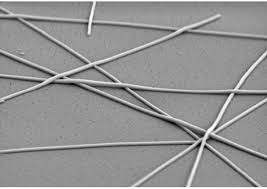Performance of Semiconductor Nano-Wires for LOC / Bio Nanosensors Based on Nano-Microelectronics Ph.D.
Author and Researcher: Engineer Afshin Rashid
Note: The nanosensors themselves are reproduced from microstructures, such as the nanowire-based sensor that detects radiation damage.
These nanosensors are embedded in blood cells. Also, the chip lab (LOC) and the Bio are a device consisting of one or more lab operators on a chip measuring a few millimeters or centimeters square and dealing with very small volumes of fluid. A lot of information can come from a sample.
These sensors are capable of detecting a wide range of chemical vapors. When the molecular bond is formed between the decomposed gas and nanowires made of semiconductor materials, for example zinc oxide (ZnO), the conductivity of the wire changes. The amount of nanowire conductivity change depends on the amount of molecule bound to the nanowire surface. For example, nitrogen dioxide gas reduces the conductivity of nano-wires and increases the carbon monoxide conductivity .
Bio Sensors (Nano Sensors for Environmental Detection Applied)
These types of Bio (Environmental Detection) sensors can often be used to detect bacteria or viruses. Carbon nanotubes are first functionalized with antibody binding. When the bacterium or virus binds to the antibody, the conductivity of the nanotube changes. Alternatively, the nanotube attaches to the metal and passes a voltage through it . When a bacterium or virus binds to the nanotube, the current changes and a signal is generated. This is a quick way to detect bacteria.
( Research Conclusion) Performance of Semiconductor Nano-Wires for LOC / Bio Nanosensors
Semiconductor nano-wires are used to develop LOC / Bio sensors capable of detecting a molecule. In these sensors, when the molecule breaks down on the oscillator's oscillator, the resonant frequency of the capacitor changes. Coating the container with acceptor molecules such as antibodies that can specifically bind to bacteria, viruses or some biomolecules increases the efficiency of the system . The capacitors are nano- and micro-sized spring platforms and operate on the basis of the platform's deflection or resonant frequency variation at the surface of the capacitor .





